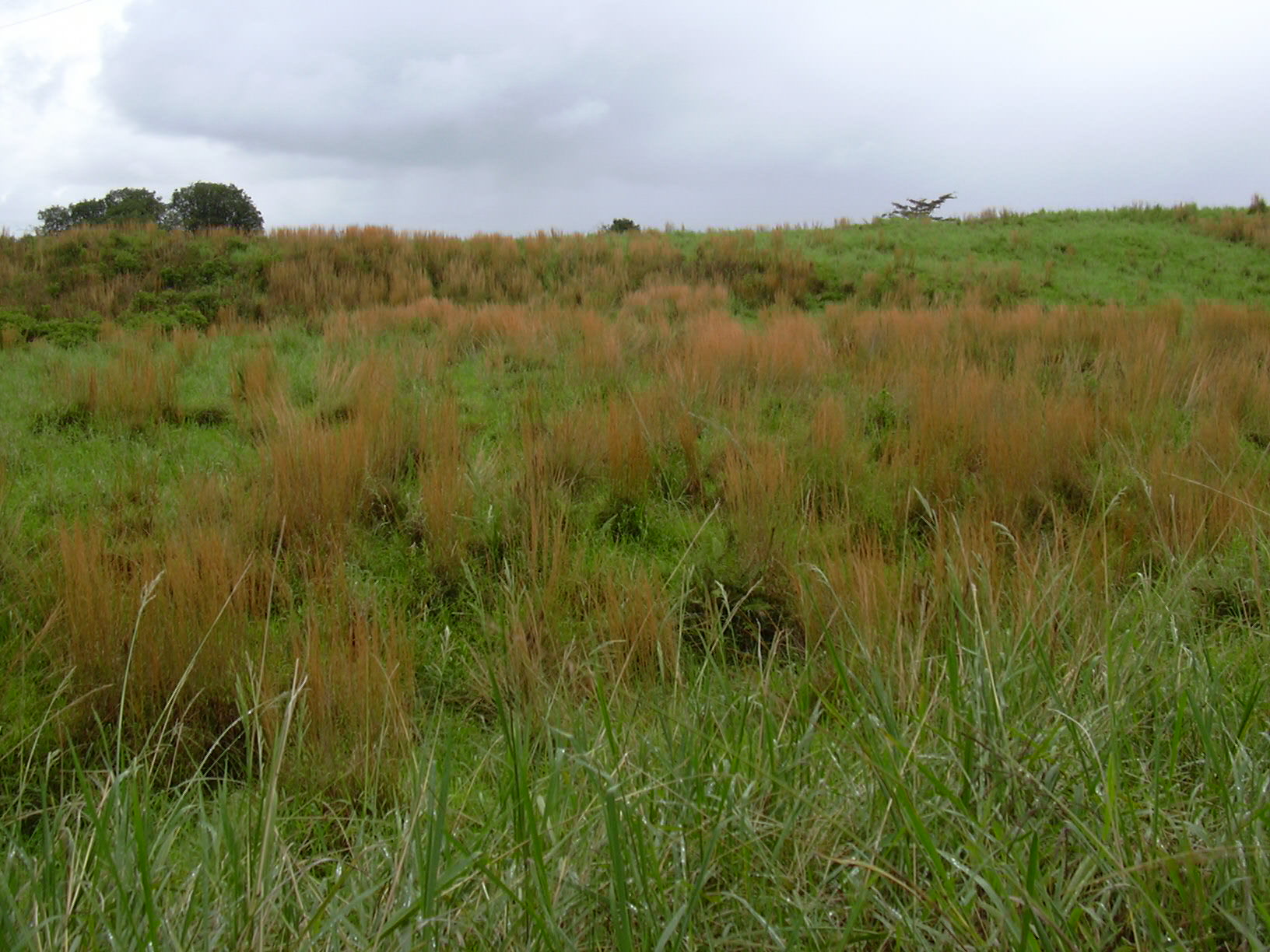- Andropogon virginicus
Taxobox
name = "Andropogon virginicus"

image_width = 210px
regnum =Plant ae
divisio =Magnoliophyta
classis =Liliopsida
ordo =Cyperales
familia =Poaceae
genus = "Andropogon "
species = "A. virginicus"
binomial = "Andropogon virginicus"
binomial_authority = L."Andropogon virginicus" is a species of grass known by several common names, including broomsedge bluestem and yellowsedge bluestem. It is native to the southeastern United States and as far north as the
Great Lakes . It is known as anintroduced species inCalifornia andHawaii , where it is weedy. It has also been introduced to Japan and Australia. This is a perennial grass forming narrow clumps of stems up to just over a meter in maximum height. Its stems and leaves are green when new, turning purplish to orange and then straw-colored with age. It produces large amounts of seeds small enough to disperse on the wind. This grass is successful in a wide range of habitats. It is a prolific seed producer, it has a highgermination rate and seedling survival rate, and it thrives in poor soils. [http://www.fs.fed.us/database/feis/plants/graminoid/andvir/all.html FEIS Ecology] ] It competes with other species byallelopathy , releasing persistent herbicidal chemicals from its dying tissues, such as drying leaves. [http://www.botany.hawaii.edu/faculty/cw_smith/and_vir.htm "A. virginicus" in Hawaii] ] It colonizes disturbed areas such as abandonedmining sites. It is a weed of pastures and grazing ranges, where it proves less palatable and nutritious tocattle than other grasses. This species is tolerant of fire and grows back quickly and more abundantly after a burn. It is perhaps most problematic in Hawaii, where its natural growth patterns are out of synch with the local climate. It is dormant during the Hawaiian rainy season, dying back and leaving the slopes it has colonized exposed and vulnerable to significanterosion . [ [http://www.invasivespecies.net/database/species/ecology.asp?si=200&fr=1&sts= Global Invasive Species Database] ] Despite its weediness, the grass is sometimes grown as anornamental plant . [ [http://www.ces.ncsu.edu/depts/hort/consumer/factsheets/ornamental_grass/andropogon_virginicus.html NC State Ornamental Grasses] ]References
External links
* [http://plants.usda.gov/java/profile?symbol=ANVI2 USDA Plants Profile]
* [http://herbarium.usu.edu/webmanual/info2.asp?name=Andropogon_virginicus&type=treatment Grass Manual Treatment]
* [http://www.ppws.vt.edu/scott/weed_id/anovi.htm VT Weed Guide]
* [http://calphotos.berkeley.edu/cgi/img_query?query_src=photos_index&where-taxon=Andropogon+virginicus Photo gallery]
Wikimedia Foundation. 2010.
